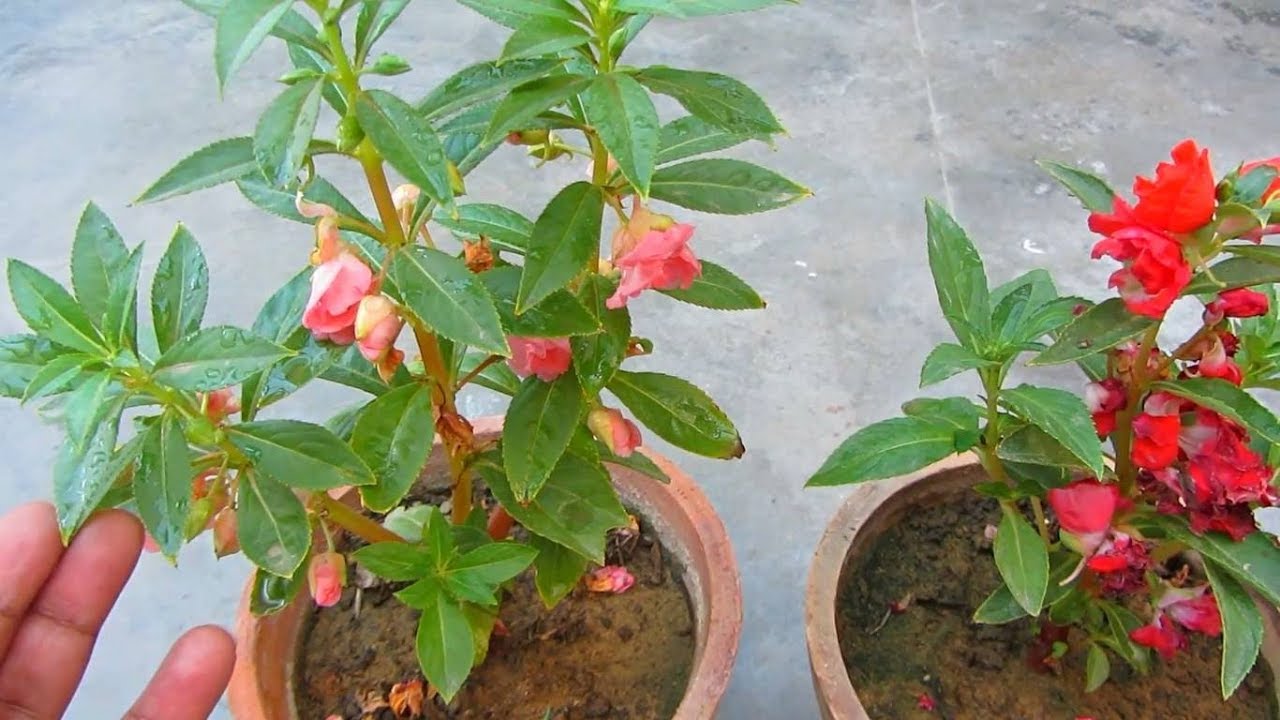The balsam plant, also known as Impatiens balsamina, is a popular annual flower prized for its bright and showy blooms that come in a wide range of colors But there’s more to this plant than just its beautiful flowers To truly understand the balsam plant, we need to take a closer look below the soil at its root and stem anatomy. Join me as we explore what makes this plant tick!
An Overview of Balsam Plant Roots
The roots of the balsam plant have some unique qualities that enable the plant to thrive in garden beds and containers Here’s a quick rundown
-
Fibrous root system – Unlike taproot systems, balsam plants have a fibrous mass of small thin roots that spread out close to the soil surface. This allows the roots to efficiently take up moisture and nutrients.
-
Water storage – The roots store water, helping the plant survive short dry spells. This makes balsam a great choice for gardeners who occasionally forget to water!
-
Mycorrhizal associations – Balsam plant roots form symbiotic relationships with beneficial mycorrhizal fungi. This mutualistic relationship improves nutrient uptake.
-
Anchorage – The fine network of roots anchors the plant firmly in place. No worries about your balsam flowers toppling over!
The Stems: Providing Support and Sustenance
The stems of the balsam plant provide the structure that supports its leaves, flowers, and seed pods. Here are some key facts about balsam stems:
-
Succulent and flexible – The stems are juicy and pliable, which allows them to bend rather than break when stressed.
-
Water storage – Just like the roots, the stems can store excess water for future use.
-
Photosynthetic – The green stems contain chlorophyll and can photosynthesize, manufacturing food for the plant.
-
Nodes and internodes – Nodes are points where leaves and flowers attach to the stem. Internodes are the spaces between nodes.
How the Roots and Stems Develop
Now that we understand the form and function of balsam roots and stems, let’s look at how they grow and develop over the plant’s lifecycle:
-
Seedling stage – The first roots emerge from the germinating seed to anchor it in place. The seedling develops its first pair of rounded leaves.
-
Leaf pairs – Nodes along the stem produce alternating pairs of leaves. More fibrous roots grow from the base of the stem.
-
Flowering – When the plant matures after 8-10 pairs of leaves, flowering stems with nodes and internodes elongate from leaf axils.
-
Pollination and seed set – With successful pollination, flowers develop into seed pods packed with seeds. The roots and stems support seed development.
-
Death and reseeding – After setting seed, the plant dies back at frost. In mild climates, seeds drop and self-sow for the next season.
Caring for the Roots and Stems
Now that we understand how balsam roots and stems grow, let’s look at how to care for them:
-
Water thoroughly – Provide consistent moisture for healthy root development. Drought stunts roots.
-
Well-drained soil – Avoid soggy soils that can rot fibrous roots. Add organic matter like compost to improve drainage.
-
Fertilize lightly – Apply a balanced liquid fertilizer every 2-3 weeks to nourish roots and stems. Too much fertilizer can cause leggy growth.
-
Sunlight – Grow balsam plants in full sun to partial shade. Insufficient light leads to weak, floppy stems.
-
Staking – If stems become stretched and floppy, use pea stakes or small cages for support.
The Key to Success: Vigorous Roots and Stems
When you grow balsam plants, the condition of their root and stem systems will make or break your success. Follow the tips above to establish a vigorously growing plant. Strong roots and stems lead to a specimen covered in colorful flowers that will be the envy of your neighborhood!

k
Arrowleaf balsamroot (Ep 8) – Botany with Brit
What are the roots and stems of a balsam plant?
In this article, we will take an in-depth look at the roots and stems of the balsam plant. The root system of the balsam plant plays a vital role in its overall health and survival. Balsam plants have a fibrous root system that consists of numerous thin, branching roots that spread out horizontally in the soil.
What is a balsam flower?
Balsam flowers are very similar to gardenias, roses or camellias. Balsam plants are like others from the impatiens family wherein the seedpods explode, scattering seeds when touched. Hence the name “touch-me-not”. Balsam was once one of the favorite plants used for Victorian gardens because of the exotic and flashy touch it adds to gardens.
How far apart should balsam be planted?
Balsam also prefers rich but well-drained soil. The plants should be spaced around 12-18 inches apart for optimal growth. If the plants will be trained to be bushy, a spacing of about 2 feet is recommended. During dry periods, they should be watered 1-2 times per week.
What does a balsam plant look like?
Balsam plants have succulent stems that are typically green or reddish-brown in color. These stems are sturdy and upright, providing support for the leaves, flowers, and fruits of the plant. One notable characteristic of balsam plant stems is their ability to store water, which is particularly important during dry periods.
